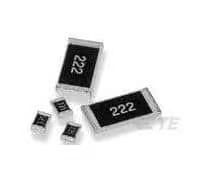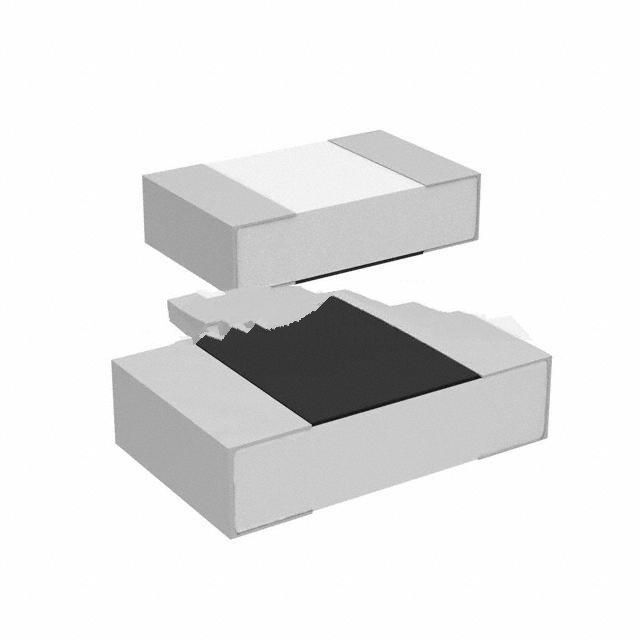What is a Surface Mount Resistor? – An Overview

What is a surface mount resistor?
Surface mount resistor, also known as a fixed resistor, is one of the metal glass glaze resistors. It is a resistor made by mixing metal powder and glass glaze powder and printing it on the substrate by screen printing. Moisture and high temperature resistance, small temperature coefficient. It can greatly save the cost of circuit space and make the design more refined.

Surface mount resistor type
1. Ordinary thick-film surface mount resistor: mainly with an accuracy of 1% and 5%, which occupies a certain position in the market due to its low cost.
2. Thin film surface mount resistor: mainly based on high-precision and low-temperature drift resistors, and is mainly used in products that require high stability, such as various instruments and testing equipment.
3. Low-desistance surface mount resistor: Generally, resistances below 1 ohm (Ω) are called low-resistance resistors. They are mainly used for current detection and voltage detection, and are widely used in various battery protection boards and protection circuits.
4. High resistance resistance: Resistance with a resistance value of more than 1 trillion euros (MΩ) is called a high resistance resistance, and the unit of higher resistance can reach G. It is mainly used in instruments and some industrial equipment, and the market is widely applied between 1M and 10M resistance.
5. High-voltage resistance: based on the pressure resistance of the resistance, such as 200V, 500V, 1KV, etc.
6. High-frequency resistance: The electrical sensitivity of the resistance itself is extremely small, also known as insensitive resistance.
7. Thermal resistance: The resistance value will show a step-up change with the change of the body temperature, which has semiconductor characteristics.
8. Anti-sulphide surface mount resistor: It is used in harsh environments, especially in the presence of harmful sulphides, which can prevent the change of resistance value caused by vulcanisation.
9. High-current surface mount resistor: specially used to measure the current in the circuit. Such resistors usually have low resistance, low temperature coefficient and high stability.
10. Metal film surface mount resistor: metal foil is used as a resistance material, with extremely low temperature coefficient and excellent long-term stability.
11. Anti-pulse surface mount resistor: designed for occasions that can withstand instantaneous high pulse current without causing damage.
In addition, there are some special surface mount resistors, such as thick-film surface mount resistors for cars, current sensing micro-ohm resistors, thin-film precision resistors, etc., which have specific characteristics and application scenarios.
Manufacturing process of surface mount resistor
The manufacturing process of surface mount resistor includes multiple steps, as follows:
- Printing on the back of the board: Printing conductive materials on the back of the board.
- Board front printing: Printing resistance material on the front of the board.
- Board firing: Put the substrate into the firing furnace and burn it at 850°C.
- Resistance material calcination: The resistance material is calcination at 850°C.
- Glass printing system: printing glass material on the substrate.
- Glass firing: The glass material is fired at 600°C.
- Laser resistance engraving: Use laser to engrave the resistance on the substrate.
- Protective layer printing: Print the protective layer on the board.
- Silk printing and curing: carry out silk printing and curing at 200°C.
- Quality inspection and measurement: Quality inspection and measurement of the manufactured resistance.

What does a surface mount resistor do?
Its main function is to realise the resistance value regulation and stability of the circuit. It needs to be used in some applications that require precise adjustment of circuit resistance values, such as filter circuits, amplification circuits, power-stabilise circuits, various control circuits, etc.
The main function of the surface mount resistor in the circuit is introduced below:
1. Current limit: Through stringing in the circuit, the patch resistor can be used to limit the size of the current passing through the circuit to ensure that other components are not burned by excessive current.
2. Voltage division: In the resistance voltage division circuit, the patch resistor cooperates with other resistors to change the voltage value of a certain point in the circuit according to Omm's law.
3. Signal conditioning: used for signal attenuation, gain control, bias setting, etc., to ensure that the signal is within the appropriate range and improve the signal quality.
4. Filter function: Combined with capacitor to form an RC filter, which is used to filter the AC noise or stabilise the DC voltage in the circuit.
5. Time and frequency response: In the RC circuit, the RC time constant composed of the patch resistor and the capacitor determines the response speed and frequency characteristics of the circuit.
6. Matching network: In radio frequency and microwave circuits, patch resistors are used to create matching networks, adjust circuit resistance, and achieve efficient signal transmission and reduce reflection.
7. Temperature compensation: Selecting a resistor with a specific temperature coefficient can be used to compensate for the performance drift caused by other components in the circuit due to temperature changes.
8. Power dissipation: As a load resistor, the patch resistor can consume excess energy and prevent the circuit from overloading.
9. Logical limit setting: In the digital circuit, the patch resistor can be combined with capacitors, crystal tubes and other components to set the logical curshold voltage.
10. Protection function: In some circuits, the patch resistor can be used as an overcurrent and overheating protection element. When the current or temperature exceeds the preset value, the circuit is cut off by the resistance's own heating or melting to protect other devices.
What are the advantages and disadvantages of surface mount resistor?
The advantages are as follows:
1. Small size: Compared with ordinary resistors, the structure of surface mount resistor is more compact and smaller, which can save the area of the circuit board, thus realising the compact layout of the circuit and realising more complex circuit design under the same conditions.
2. Light weight: With the popularity of digital electronic equipment, lightweighting has also become one of the important trends of modern electronic components. Surface mount resistor is manufactured by miniaturisation technology, which is light in weight and suitable for various lightweight equipment.

3. High accuracy: Because the surface mount resistor adopts automated wafer manufacturing technology in the manufacturing process, the processing accuracy is high, the error is small, and it can provide high-precision resistance values.
4. Strong reliability: The surface mount resistor is made of ceramic materials or film materials, which has excellent high temperature resistance, corrosion resistance and other properties, making it have high reliability and service life.
5. Good high-temperature stability: Because the surface mount resistor is made of ceramic materials or film materials, it has good high-temperature performance and can work stably at high temperatures, which is suitable for applications in high-temperature environments.
The disadvantages are as follows:
1. Easy to weld
2. Limited power
3. Easy to accumulate dust and affect performance
4. The lead space is small
How to tell if a surface mount resistor is bad?
1. Observe the appearance
The appearance after surface mount resistor is damaged is usually manifested as: discolouration, severe deformation, cracks, dark spots, etc.
1. Discolouration
If the appearance of the surface mount resistor has abnormal discolouration, such as the surface is black or gray, it is very likely that the resistance is overheated, the resistance value is too high, and the service life of the device is shortened.
2. Severe deformation
If the appearance of the surface mount resistor is obviously deformed, it is generally due to the overheating of the resistor during use, resulting in deformation of the resistor and abnormal conditions.
3. Crack pattern
If there are obvious cracks on the surface of the surface mount resistor, it is likely that the force exceeds the strength limit of the material, or due to poor assembly or processing quality, mechanical damage, etc.
4. Black spots
If the surface of the surface mount resistor has paint oxidation, blackening, water ripples and other conditions, it is likely that the resistance is affected, and the copper and aluminum foil inside is oxidised to produce black copper, resulting in black spots on the surface.
5. Measurement
Through the above representations, we can preliminarily judge whether the surface mount resistor is damaged. However, the specific damage situation needs to be measured through test instruments, such as the universal metre to measure the resistance value, the capacitor metre to measure the volume value, and the electrostatic tester and other instruments to detect the electrical performance of the resistor device.
Can I replace SMD resistor with normal resistor?
No, there are significant differences between ordinary resistors and surface mount resistors in application scenarios and packaging formats, so ordinary resistors cannot directly replace surface mount resistors.
The following are the main differences between ordinary resistors and surface mount resistors:
Encapsulation format: Ordinary resistors usually adopt plug-in encapsulation, which is fixed by inserting the foot into the hole of the circuit board. The surface mount resistor adopts surface mounting and packaging, which is directly attached to the surface of the circuit board, and does not need to insert the foot into the hole.
Application scenario: Ordinary resistors are suitable for circuits with a wide power range, ranging from 1/8 watts to tens of watts, and are suitable for various circuit designs. The power of the surface mount resistor is generally small, generally between 1/16 watts and 1 watt, which is suitable for high-density circuit board design.
Accuracy and stability: Precision resistors reach certain standards in terms of resistance error, thermal stability, distribution parameters, etc., while ordinary resistors have poor performance in these aspects and cannot meet the standards of precision resistors.
How do surface mount resistors impact circuit design?
Surface mount resistors allow for more compact and efficient circuit designs, enabling higher component density and improved performance in modern electronic devices. They are particularly useful in high-speed and high-density applications where space is at a premium.

How do you read a surface mount resistor?
The reading method of surface mount resistor mainly depends on the number or letter identification on its surface. Here are several common reading methods:
Pure digital logo
Three digits: the first two digits represent the effective number, and the third digit represents the several squares of 10. For example, 103 means 10 × 10^3 = 10kΩ.
Four digits: The first three digits represent a valid number, and the fourth digit represents the number of 10. For example, 4721 means 472 × 10^1 = 4.72kΩ.
Number plus letter R logo
R represents the decimal point. For example, 4R7 means 4.7Ω.
Other symbols of numbers plus letters: for example, m represents megaohm, B1P0 and other special symbols may need to refer to the corresponding resistance code table.
No identification
For extremely small surface mount resistors, the resistance value may not be marked. At this time, a multimeter needs to be used for measurement.
What are the application of surface mount resistor?
Surface mount resistor is widely used in various electronic devices, including but not limited to:
- Automotive electronics: used for automotive battery management system to monitor battery temperature to ensure safe operation.
- Power supply and communication equipment: circuit protection and signal processing for power supply and communication equipment.
- Consumer electronics: used in consumer electronic products such as mobile phones and tablets
Statement
All articles (images, texts, audio) on this site are uploaded and shared by users, or integrated from relevant internet sources, only for user's learning. If your rights are violated, please contact the administrator to delete! Link to this article: https://www.jinftry.com.







